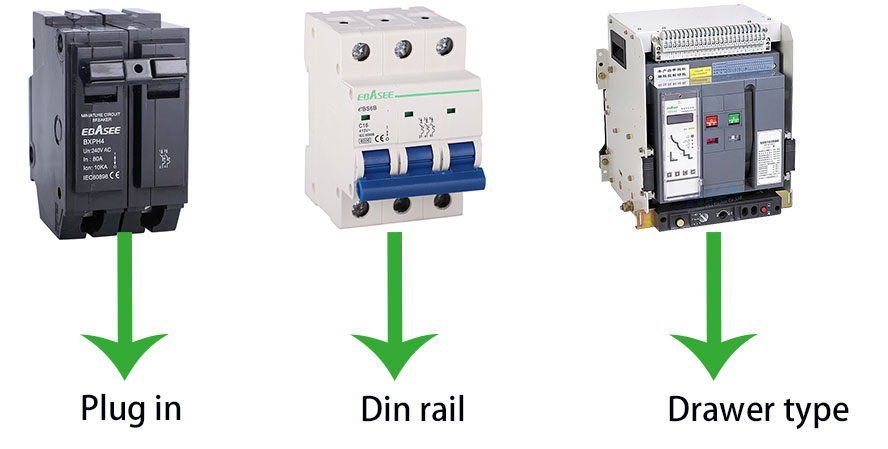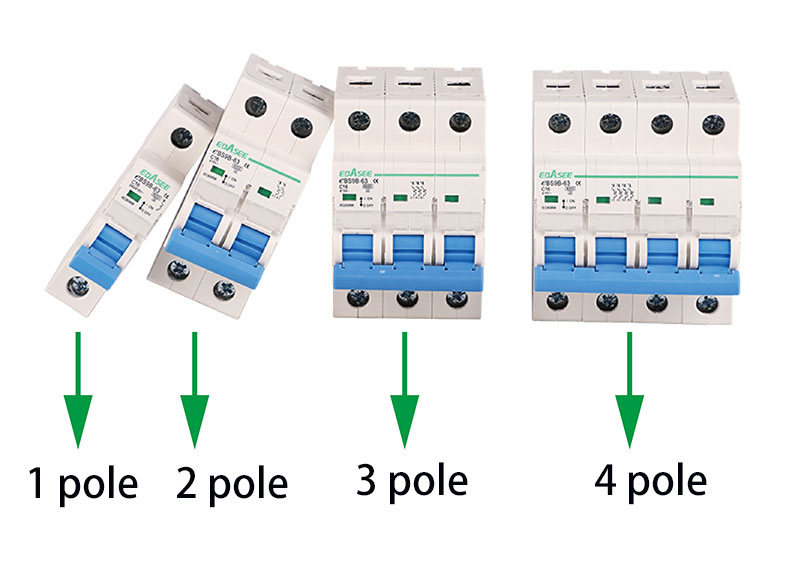circuit breakers and its type
DATE:2021-05-27
What’the circuit breaker?
Circuit breaker refers to a switching device that can close, carry and break current under normal circuit conditions and can close, carry and break current under abnormal circuit conditions within a specified time. Circuit breakers are divided into high-voltage circuit breakers and low-voltage circuit breakers according to their scope of use.
The architecture of the circuit breaker
Circuit breakers are generally composed of contact system, arc extinguishing system, operating mechanism, trip unit, shell, etc.
Working principle of circuit breaker
There is an electronic type that uses a transformer to collect the current of each phase and compares it with the set value. When the current is abnormal, the microprocessor sends a signal to make the electronic trip unit drive the operating mechanism.
The function of the circuit breaker is to cut off and connect the load circuit, as well as cut off the fault circuit, to prevent the expansion of the accident and ensure safe operation. The high-voltage circuit breaker needs to break the 1500V, current 1500-2000A arc, these arcs can be stretched to 2m and still continue to burn without being extinguished. Therefore, arc extinguishing is a problem that must be solved by high-voltage circuit breakers.
The principle of arc blowing and arc extinguishing is mainly to cool the arc to weaken the thermal dissociation. On the other hand, the arc is stretched by the arc to strengthen the recombination and diffusion of charged particles, and at the same time, the charged particles in the arc gap are blown away to quickly restore the dielectric strength of the medium.
Working principle of low voltage circuit breaker
Low-voltage circuit breakers are also called automatic air switches, which can be used to connect and break load circuits, and can also be used to control motors that start infrequently. Its function is equivalent to the sum of part or all of the functions of knife switches, overcurrent relays, voltage loss relays, thermal relays and leakage protectors. It is an important protective electrical appliance in low-voltage distribution networks.
Low-voltage circuit breakers have a variety of protection functions (overload, short circuit, undervoltage protection, etc.), adjustable action value, high breaking capacity, convenient operation, safety, etc., so they are widely used. Structure and working principle The low-voltage circuit breaker is composed of operating mechanism, contacts, protection devices (various releases), arc extinguishing system, etc.
The main contact of the low-voltage circuit breaker is manually operated or electrically closed. After the main contact is closed, the free trip mechanism locks the main contact in the closing position. The coil of the overcurrent release and the thermal element of the thermal release are connected in series with the main circuit, and the coil of the undervoltage release is connected in parallel with the power supply. When the circuit is short-circuited or severely overloaded, the armature of the overcurrent release pulls in, causing the free tripping mechanism to operate, and the main contact disconnects the main circuit. When the circuit is overloaded, the heating element of the thermal trip unit will bend the bimetal and push the free trip mechanism to move. When the circuit is under-voltage, the armature of the under-voltage release is released. It also makes the free trip mechanism act. The shunt release is used for remote control. During normal operation, its coil is cut off. When distance control is required, press the start button to energize the coil.
Type of breakers
According to the installation method: there are plug-in type, din rail type and drawer type, etc.

According to the number of poles: single pole, two pole, three pole and four pole..

Wiring of main switch breakers
Circuit breaker wiring methods include front board, back board, plug-in type, and drawer type. If users have no special requirements, they will be supplied as front board. Front board wiring is a common wiring method.
Working conditions of eletrical breakers
Ambient air temperature: upper limit of ambient air temperature +40℃; ○ lower limit of ambient air temperature -5℃; 24h average value of ambient air temperature does not exceed +35℃.
Altitude: The altitude of the installation site does not exceed 2000m.
Atmospheric conditions: The relative humidity of the atmosphere does not exceed 50% when the ambient air temperature is +40℃; it can have a higher relative humidity at a lower temperature; the average maximum relative humidity of the wettest month is 90%, and the maximum relative humidity of the month is 90%. The monthly average minimum temperature is +25℃, taking into account the condensation on the surface of the product due to temperature changes.
Pollution degree: Pollution degree is 3.

